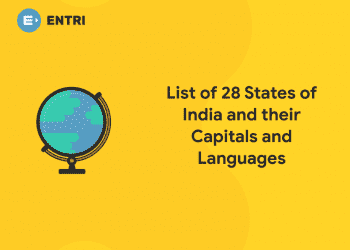Table of Contents
Insurance is a term defined as a contract, represented by a policy, in which an individual or entity acquires financial security or repayment against losses from an insurance company. The company pools clients’ risks to make payments more reasonable for the insured. The ‘insurer’ is the one who computes risks, provides insurance policies, and pays out claims. The ‘insured’ is the person who is protected under the insurance policy.
Insurance policies are used to evade the risk of financial losses, both big and small, that may result from damage to the insured or her property or penalty for damage or injury caused to a third party. There is a group of different types of insurance policies available, and effectively any individual or business can find an insurance company willing to insure them for a price.
Businesses need special kinds of insurance policies that insure against distinct types of risks faced by a certain business. For example, a fast-food restaurant needs a policy that protects damage or injury that occurs as a result of cooking. An auto dealer is not subject to this type of risk but does demand coverage for damage or injury that could occur during test drives.
History of Insurance Industry in India
Insurance has been documented in the ancient texts of Manu (Manuscript), Yagnavalkya (Dharmasastra), and Kautilya (Artashat), where intensities were spread upon pooling of aids. When disaster struck, this pool of aids would get redistributed to help those concerned within the community or village the distressed was part of. Over time, Indians borrowed heavily from other nations to form the current avatar of insurance.
History of insurance in India PDF
In the Period of Colonization
During the colonial period, Oriental Life Insurance was the first British company launched in 1818. Later, the Bombay Assurance Company and Madras Life Insurance were launched in 1823 and 1829 respectively. In the case of general insurance, Triton Insurance Company Ltd., which is British-owned, was launched in 1850. In 1907, the first Indian general insurance company, namely Indian Mercantile Insurance was placed. In 1905, the Swadeshi Movement which reproduced, “Be Indian Buy Indian Movement” led to the location of many life insurance companies. However, until 1912, the insurance
industry was yet to be controlled. Two legislations, i.e. the Indian Life Insurance Companies Act and the Provident The insurance Societies Act was then enacted in 1912. Furthermore, these acts placed a restriction on the actions of Indian insurance companies but not foreign insurance companies. There was no complete act for the insurance industry until The Insurance Act was passed in 1938. This act covers both life and general insurance.
After Colonization Period
The Insurance Act (1938) has been widely used as a reflection by the insurance industry until the industry was nationalized. The life insurance industry was nationalized in 1956 and the general insurance industry was nationalized in 1972. Nationalization took place with the longing that with the economies of scale, the cost can be trimmed down and the lower premium can be paid to the market. In expansion, the government can relieve the life insurance products to the rural areas, which are not in the welfare of the private insurance companies due to non-profitability.
The central purpose of the nationalization of the life insurance industry is to complete the social objective of insurance and present it to the neglected rural areas. Due to the nationalization in 1956, 245 companies including foreign own companies were taken over by the government (Life Insurance Corporation of India, 2004). Thereafter, life insurance was operated under the publicly owned Life Insurance Corporation (LIC) of India established on the Life Insurance Corporation Act 1956.
General Insurance Industry
General insurance is under the Tariff Committee under the supervision of the General Insurance Council of the Insurance Association of India. Under this committee, the insurance associated with motor, fire, marine, and diverse are covered. In 1968, the Tariff Committee was returned with the Tariff Advisory Committee, as validated with the emendation of Insurance Act 1839.
The main mission of this committee is to set the floor price and it should be occasionally inspected to suit the current market condition. Based on the cost set by this committee, the general insurance companies set their costs. This advisory committee is operating unassisted until the nationalization of general insurance companies in 1972. The nationalization of general insurance is executed by the General Insurance Business (Nationalization) Act 1972. Before 1973, there are 107 companies, including foreign companies offering general insurance. They were amalgamated and formed into four associates under the General Insurance Corporation of India.
After Nationalization
The Malhotra committee was founded in 1993, after the nationalization of the insurance industry, The Chairperson of this committee is R.N. This committee completed a survey discussing the impact of nationalization. For life insurance, LIC was able to supply a sufficient level of assistance according to the customers’ satisfactory survey. LIC tended to attract 60 to 70 million policyholders and extended into rural areas. Regardless, in the case of general insurance, a few negative issues were faced after the nationalization of the general insurance companies. In 1972, the General Insurance Corporation (GIC) of India was included under the Companies Act 1965 to handle and manage the business of general insurance of India after nationalization. GIC is re-organized with four fully held associate companies: National Insurance Company Limited, New India Assurance Company Limited, Oriental Insurance Company Limited, and United India Insurance Company Limited. The version of GIC was denounced by the Malhotra Committee by filling out the unavailability of complete and up-to-date data.
In addition, with the amendment of the Motor Vehicles Act 1939, there was an expansion in third-party liability and hence, the premium should be more elevated. However, due to political pressure, the premium cannot be improved and thus it does not reminisce the market price. Therefore, GLC incurred tremendous losses in motor insurance. This directed to the negation of the Tariff Advisory Committee on 1st April 2006. Moreover, the efficiency of four assistants is examined and it has been proposed that these assistants should be separate companies and GLC should not be the holding company and should concentrate solely on reinsurance. These companies came out with the “voluntary retirement scheme” to lower the number of staff since they were overstaffed. In 1995, the Mukherjee Committee was placed up.
The purpose of this committee is to deliver a definite plan for newly constructed insurance companies. The report of this committee is not revealed to the public. This committee also concentrates on the translucent revelation of financial information. After the report from the Malhotra Committee, the political fluctuation delayed the procedure to liberalize the insurance industry.
The Indian Cabinet approved the Insurance Regulatory Authority (IRA) Bill on 16th March 1999. After the new government came into presence, the Insurance Regulatory and Development Authority Act (which is now called the Insurance Regulatory and Development Authority) was enacted on 7th December 1999, aspired at liberalizing the insurance industry. Starting from early 2000, private companies are given licenses for insurance, according to life, general, and reinsurance.
Indian Insurance Industry Analysis After Liberalization
According to the Annual Report of Insurance Regulatory and Development Authority India (2012-13), 56.8% of the total insurance premium worldwide belongs to life insurance premiums. From that percentage, the Indian life insurance premium contributes 80.2% of the whole Indian insurance market premium. In expansion, Indian life insurance is ranked 10th among 88 countries. During 2012, India’s share in the global life insurance market was 2.03% and in 2011, its share was 2.30%.
In 2011, the Indian life insurance penetration rate was 3.4% while the global rate was 3.8%. In 2012, the Indian life insurance penetration rate was 3.2% while the global rate was 3.7%. In the case of general insurance, 43.2% of the entire insurance premium worldwide belongs to the general insurance premium. From that percentage, the Indian general insurance premium contributed 19.8% of the entire Indian insurance market premium. It witnessed significant growth of 10.25% in 2012.
Its version is much better than the growth of the global general premium which was only 2.6%. However, in terms of market share, the Indian general insurance premium had only 0.66% of global general insurance and ranked 19th in the global general insurance market. Indian non-life insurance penetration rate was 0.7% while the global rate was 2.8%. In 2012, the Indian non-life insurance penetration rate was 0.8% while the global rate was 2.8% (Annual Report of Insurance Regulatory and Development Authority India).
India’s premium stake in the global life insurance and non-life insurance market was at 2.73% and 0.79% respectively, during 2019. The entire insurance penetration in India was at 3.76% in 2019 (life insurance 2.82% and non-life 0.94%) and the entire insurance density in India was at $78 in 2019-20.
Download Entri App for more Details on Insurance
History of Indian Insurance in a Nutshell
1: What does the acronym "ATM" stand for in banking?
From 1818 to 1899
- 1818
- The invention of Oriental Life Insurance Company in Calcutta. Granted with British capital, the company discontinued operations in 1834.
- 1829
- The invention of Madras Equitable Life Insurance Company.
- 1850
- The invention of Triton Insurance Company; the first non-life insurance company placed up by the British.
- 1870
- Commission of the British Insurance Act.
- 1871
- The invention of Bombay Mutual Life Assurance Society, the first national insurance company.
- 1897
- The invention of Empire of India Life Assurance Company.
From 1900 to 1999
- 1907
- The invention of Indian Mercantile Insurance, the first company to market all nonlife types of business.
- 1912
- Journal of the first Life Insurance Companies Act.
- 1914
- The first journal of insurance market results.
- 1928
- Commission of the Indian Insurance Companies Act, a law that permits the government to gather statistical data on the life, non-life, and pension dealings of Indian and foreign insurers.
- 1938
- Amendment of the Insurance Act. Presenting new standards for managing insurance activities.
- 1947
- The invention of Oriental Insurance Company in Mumbai, the first non-life state-owned company. It is presently established in Delhi.
- 1950
- The decision to nationalize the insurance market.
- 1956
- – Nationalisation of the life market.
- – Invention of Life Insurance Corporation (LIC), which takes over the portfolios of 154 Indian insurers, 26 foreign insurers, and 75 pension companies, that is a total of 245 commodities.
- 1957
- The invention of the General Insurance Council, a body registering to the Insurance Association of India, is answerable for creating a Code of Conduct in nonlife insurance.
- 1968
- Amendment of the Insurance Act: the amendments include investment regulation, minimum solvency margin decision, and the innovation of a tariff advisory committee.
- 1972
- – Nationalization of non-life insurance “General Insurance Business Act”. The activities of 107 property and casualty insurers are separated into four national commodities.
- – General Insurance Corporation (GIC) forms.
- 1993
- Putting up a committee to improve the insurance sector.
- 1994
- Reform Committee report offered: reform committee calls for market reopening to the private sector.
- 1999
- Invention of the Insurance Regulatory and Development Authority (IRDAI), an autonomous body responsible for overseeing the insurance industry.
From 2000
- April 2000
- Transformation in the status of IRDAI from a liberated body to a statutory body
- August 2000
- Spreading up the market to foreign investors. The shelter on foreign direct investment (FDI) is set at 26% of the company’s capital
- December 2000
- – Restructuring of General Insurance Corporation (GIC). Insurers’ subsidiaries become full-fledged autonomous companies.
- – GIC transforms into a national reinsurance company.
- 2015
- Extending the limit of foreign direct investment (FDI) from 26% to 49% of the company’s capital.
- 2019
- Foreign investors may hold 100% of the share capital of a brokerage company.
The insurance industry is essential for any country’s economic evolution. A well-organized insurance sector raises risk-taking in the economy, as it supplies some protection in the event of a loss-causing happening. It also supplies much-needed assets to family members in the case of loss of life or health. Since the assets under the administration of insurance companies designate long-term capital, they also act as a collection in which to invest in long-term projects such as infrastructure growth.
The insurance industry in India has also developed along with the country’s economy. Several insurance companies in the country are developing their operations, across both the public and private sectors. Here are the detailed learning notes of the ‘History of Indian Insurance Industry”. You should grab more pieces of information and notes for learning through Entri App.












